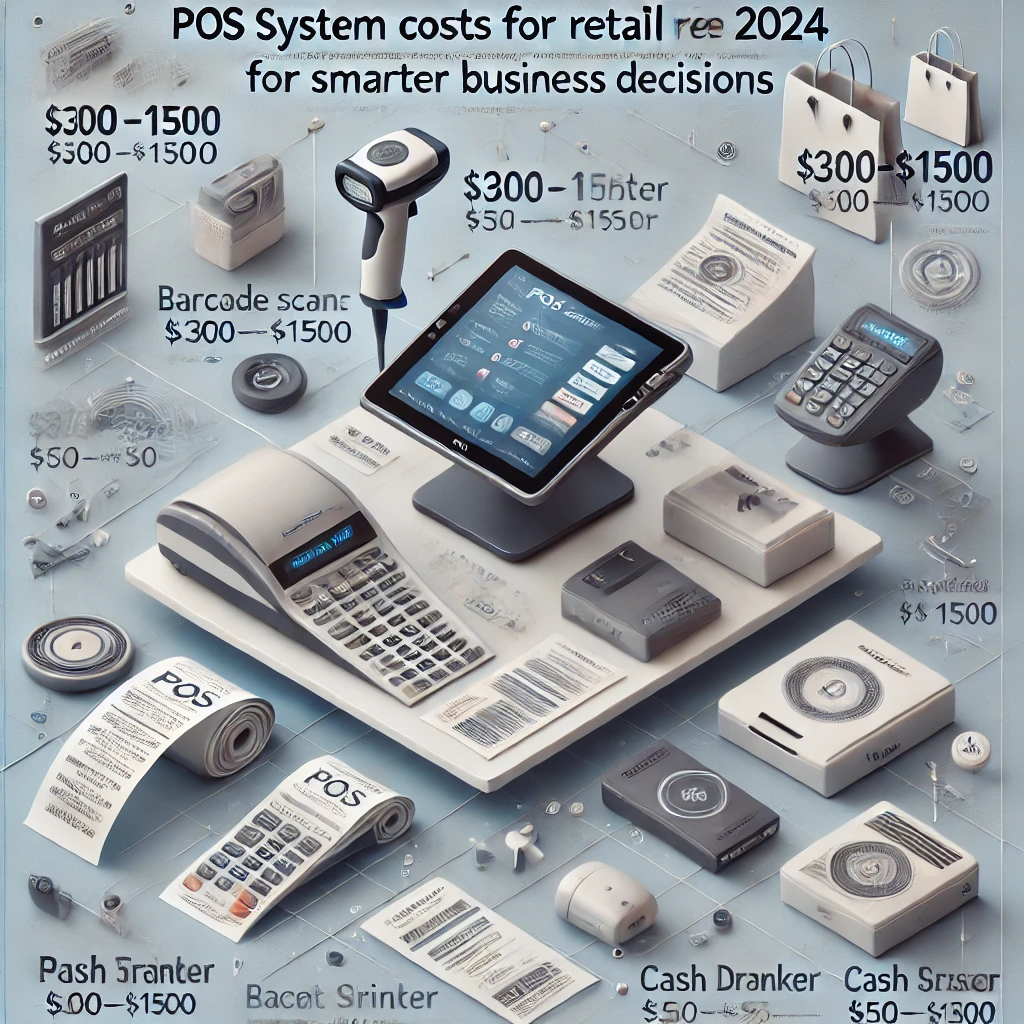As a retail store owner, investing in the right tools can be the key to operational efficiency and enhanced customer satisfaction. One such vital tool is a Point of Sale (POS) system. But how much does a POS system cost for retail stores in 2024? This guide will break down the expenses and provide insights to help you make an informed decision.
What Is a POS System?
A POS system combines hardware and software to facilitate transactions, manage inventory, and provide critical business insights. Retailers use these systems to streamline operations, reduce errors, and improve customer service. Modern POS systems often include features such as cloud storage, analytics, and integration with other business tools.
By integrating a POS system, retail stores can enjoy seamless operations, track sales trends, and maintain better control over inventory—all while providing an enhanced shopping experience to customers. For instance, a boutique might use a POS system to manage seasonal inventory, while a grocery store might benefit from real-time stock updates.
Factors Influencing POS System Costs
The cost of a POS system for retail stores can vary widely depending on several factors:
1. Hardware Costs
Retail POS systems typically require hardware like:
- POS Terminals: These can range from $300 to $1,500 per unit. For example, a compact terminal with touchscreen capabilities might cost $700, while a premium all-in-one unit could exceed $1,500.
- Barcode Scanners: Prices range from $50 to $300. Scanners with advanced features like Bluetooth connectivity often cost more.
- Receipt Printers: These cost between $100 and $400. Thermal printers are popular due to their speed and reliability.
- Cash Drawers: Expect to pay $100 to $250. Secure, durable models are essential for high-traffic stores.
2. Software Costs
POS software is usually subscription-based, with costs ranging from $50 to $300 per month, depending on features such as:
- Inventory management
- CRM (Customer Relationship Management)
- Multi-store capabilities
Cloud-based solutions like Shopify POS or Lightspeed POS are popular for their ease of use and scalability. On-premise solutions may have higher upfront costs but lower long-term expenses.
3. Payment Processing Fees
These are ongoing costs associated with credit card transactions. Fees typically range from 2.5% to 3% per transaction. For instance, if your store processes $10,000 monthly in credit card sales, you might pay $250 to $300 in processing fees.
4. Add-On Features and Customization
Additional features, such as loyalty programs, advanced analytics, or employee management tools, can increase costs by $20 to $100 per month per feature. For example, integrating a customer loyalty program to reward repeat buyers might cost an additional $50 monthly.
5. Installation and Training
Initial setup costs, including installation and employee training, can range from $500 to $1,500, depending on the complexity of the system. Comprehensive training ensures your team can fully utilize the system’s features.
Average Cost Ranges for Retail POS Systems
- Small Businesses: $1,000 to $3,000 for the first year, including hardware and software.
- Mid-Sized Businesses: $3,000 to $10,000 for more advanced features and hardware.
- Large Enterprises: $10,000+ for custom solutions with multi-store capabilities.
For example, a small boutique might spend $2,500 on a basic POS setup, while a supermarket chain could invest $15,000 for a scalable solution.
Hidden Costs to Consider
When budgeting for a POS system, keep in mind these potential hidden costs:
- Maintenance and Updates: Ongoing maintenance fees can add $100 to $300 annually.
- Support Services: 24/7 support plans may cost an additional $50 to $200 per month.
- Hardware Replacement: Hardware has a lifespan and may require replacement every 3 to 5 years.
- Integration Fees: Connecting your POS system with other software, such as accounting tools, may involve extra charges.
Real-World Scenarios
Consider this example: Jane’s boutique, which generates $20,000 monthly in sales, opted for a cloud-based POS system. Her setup included a $1,000 terminal, a $300 receipt printer, and $75/month software. Over the first year, her total cost was approximately $2,200. The system’s inventory tracking and analytics helped her reduce overstock by 20%.
Benefits of Investing in the Right POS System
While the costs may seem significant, a well-chosen POS system can offer numerous advantages:
- Efficiency: Faster transactions and reduced wait times.
- Accuracy: Minimized human errors in inventory and sales tracking.
- Insights: Detailed analytics for better decision-making.
- Scalability: Ability to grow with your business needs.
According to a study by Retail Tech Insights, businesses that adopt modern POS systems report an average 15% increase in customer satisfaction due to faster checkout times and improved service.
How to Choose the Right POS System
- Assess Your Needs: Identify the features essential for your business. Do you need multi-store management or advanced analytics?
- Compare Vendors: Research and compare pricing and features of leading POS systems like Square, Clover, and Toast.
- Test Before You Buy: Many providers offer free trials or demo versions.
- Consider Long-Term Value: Factor in scalability, support, and hidden costs. For instance, cloud-based systems may have higher subscription fees but lower hardware expenses.
Call to Action
Investing in a POS system is a crucial decision for any retail store owner. Understanding the costs and benefits will ensure you choose a system that meets your needs and budget. If you’re exploring options for your store, check out our point of sale software solutions designed for retail businesses. Whether you’re running a boutique or a large chain, we have the tools to help you succeed.
By selecting the right POS system, you’re not just purchasing a tool but investing in your business’s growth and efficiency.
Conclusion
In 2024, the cost of a POS system for retail stores depends on various factors, from hardware and software to hidden fees. By thoroughly researching your options and planning your budget, you can find a solution that not only fits your needs but also helps your business thrive. Start your journey with confidence and equip your store with the right tools for success.






